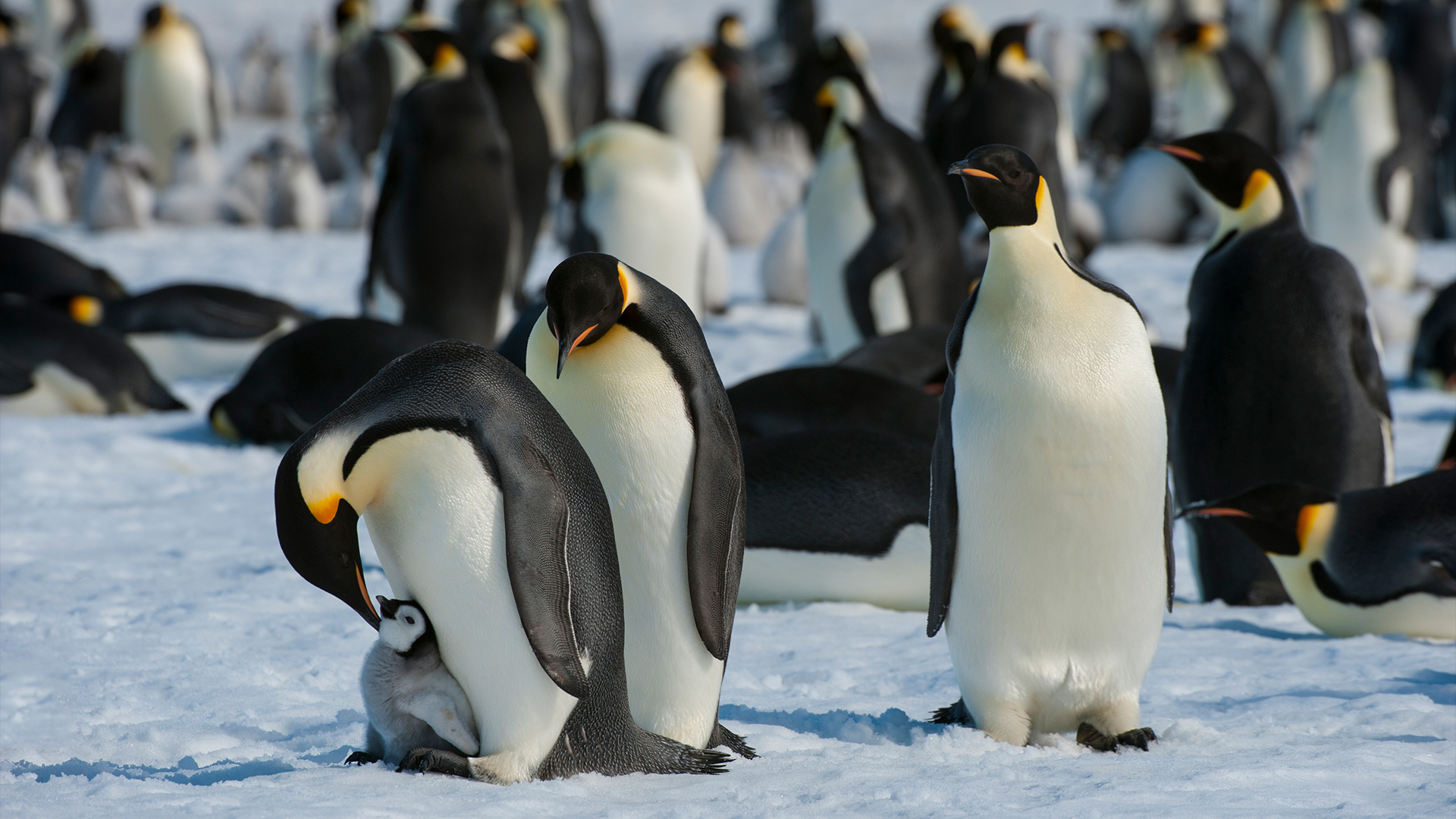4 never-before-seen emperor penguin colonies discovered in Antarctica, thanks to poop smears spotted from space
A scientist scoured satellites for signs of unreported Emperor penguin colonies and made a shocking discovery.

By searching through satellites for poop trails in Antarctica, a scientist recently identified four previously undiscovered emperor penguin colonies. This brings the total number of known breeding colonies for this vulnerable species to 66, according to a paper published Jan. 20 in the journal Antarctic Science.
The findings "give us an idea of the distribution and where the colonies are, and that's really, really important if we're going to monitor how they adapt to climate change," study author Peter Fretwell, a scientist at the British Antarctic Survey, told NBC News.
To identify these colonies, Fretwell combined data collected by the Maxar WorldView-2 imagery monitoring satellite and the European Space Agency's Sentinel-2 satellite between 2018 and 2022. Even from space, scientists can spot brown smudges from the penguin's guano, or excrement. The colonies Fretwell discovered likely have existed for many years, he said.
RELATED: Emperor penguins join threatened species list, thanks to climate change
They are mostly small groups, with less than 1,000 breeding pairs each. Some of the newly discovered colonies are near other established penguin hotspots. One of the unreported areas — on the coast of Marie Byrd Land in West Antarctica — is located around 31 miles (50 kilometers) from an abandoned Russian research station, which never had any published records of emperor penguin sightings while it was operational, according to the paper.
Another new colony site was located on the northern side of the Lazarev Ice Shelf, where a larger colony was once recorded but declared extinct in 2019. "It seems highly probable that the newly reported site is a movement of the old Lazarev colony, possibly due to the extension of the ice tongue or a change in sea-ice conditions," Fretwell wrote in the study.
These findings increase the global emperor penguin population by up to 5,700 pairs. However, the population of the lost Lazarev penguin colony was estimated to be around 4,500 pairs, and the new colony appears to be much smaller, so "the overall contribution to the global population is probably minimal," Fretwell wrote in the paper.
Sign up for the Live Science daily newsletter now
Get the world’s most fascinating discoveries delivered straight to your inbox.
Emperor penguins are the largest penguin species, weighing up to 100 pounds (45 kilograms), around the same weight as most 13-year-old boys. With just around 200,000 breeding pairs left in the wild, they are also among the most threatened penguin species, and are projected to be quasi-extinct by the end of the century, according to a 2021 study.
The penguins breed at the coldest time of the year in Antarctica and raise their young on frozen patches of sea ice so that their chicks fledge in the summer. However, sea ice is melting at rapid rates due to warming temperatures, putting this species at peril.
"Emperor penguins have taken it upon themselves to try to find more stable sea ice," Fretwell told the Associated Press.

Kiley Price is a former Live Science staff writer based in New York City. Her work has appeared in National Geographic, Slate, Mongabay and more. She holds a bachelor's degree from Wake Forest University, where she studied biology and journalism, and has a master's degree from New York University's Science, Health and Environmental Reporting Program.









